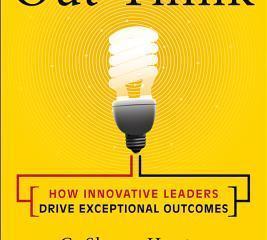

“No Ordinary Disruption: The Four Global Forces Breaking All the Trends” by Richard Dobbs, James Manyika and Jonathan Woetzel (PublicAffairs, $27.99).
Three McKinsey Global Institute researchers based in different parts of the world see the future of business from 30,000 feet and ground level. Forget trend lines, they say; brace yourself for trend breaks, and the “new normal of shifts, shocks and surprises.”
Here are the four forces that should capture your attention:
1. Growth of urbanization in emerging markets. Just as farmers in the United States left farms for better-paying city jobs, those in emerging markets are going urban. Have you heard of Tianjin (China) or Porto Alegre (Brazil)? Their growth, along with that of 400+ other small-to-medium cities you probably never heard of, will account for nearly half of the growth of global gross domestic product through 2025.
2. Accelerating technological change. Technology brings economic progress as businesses and individuals have access to devices that improve communication. Hand-in-hand with the growth of technological applications in business and personal space, goes “infobesity” (i.e. vast amounts of information available to businesses and consumers) and the cloud’s information sharing.
Economic progress has its upside, but there will be casualties because the life cycle of products and companies will shorten. Risk assessment will play an ever-growing role in decision-making.
3. Responding to the world’s aging population. There’s a demographic “deficit.” As the population of developed countries grays and fertility continues to drop, there will be fewer people entering the labor force.
Smaller workforces, even with technological growth, may not be able to maintain previous GDP levels, or sufficiently support governmental programs for longer-living retirees.
4. Greater global connections: European and North American trading hubs dominated the 20th century. The 21st century will shift to include China, India and Africa. New markets will open; many old markets will plateau or decline. To seize new markets, businesses will need to invest capital and understand cultural norms.
The bottom line: The authors see the future’s global dots and connect them. How will you make your connections?
“You are What You Tweet — Harness the Power of Twitter to Create a Happier, Healthier Life” by Germany Kent (Starstone Press, $16.95).
In personal branding, your social media profiles convey your story. Of all the social media outlets, Twitter allows you to best build your brand because it extends the reach of your words through retweets and additional followers. Think of your tweets as personal public relations.
Your brand message starts with your profile. Your picture, its background image and your tagline are important for two reasons:
1. Visibility. Tweeters usually see your profile picture and tweets when they scroll down their Twitter timelines. They’re apter to pay attention to your message when they readily pick out your tweets.
2. Attracting followers. With the abundance of social media information available, potential followers are selective. Think of your profile as your book’s dust jacket. Your picture and background are the cover. Your tagline is its title; it should tell followers what to expect from your tweets.
Tweet often and stay on message. With a 140-character limit, you must think about what you want to say, and use texting “shorthand.” If you include links to articles or websites, say something about their content to pique interest.
Expand your reach to potential followers by including a link to your Twitter profile (along with LinkedIn) in your email signature.
Key takeaway: On Twitter, you can establish a brand that shares knowledge and builds bridges. Aspire to become a thought provoker and opinion leader.






